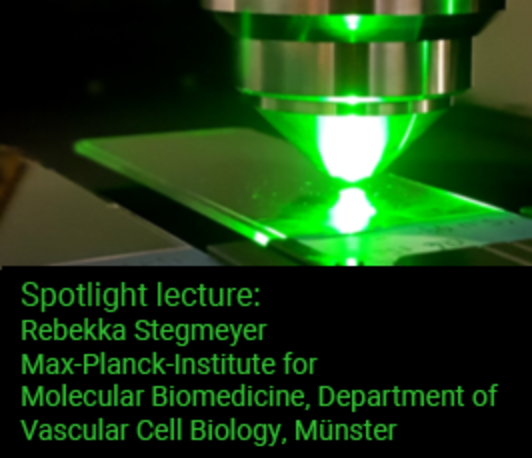Led by landmarks – Retrieval of inflamed skin venules using correlative intravital light- and electron microscopy
- Date: Apr 4, 2023
- Time: 02:00 PM - 03:15 PM (Local Time Germany)
- Speaker: Rebekka Stegmeyer
- Max-Planck-Institute for Molecular Biomedicine, Department of Vascular Cell Biology
- Location: web-talk
- Room: Zoom-Meeting
- Host: Max Planck BioImaging Core Unit Network - Spotlight Talks

Rebekka Stegmeyer will talk about the following paper:
Landmark-based retrieval of inflamed skin vessels enabled by 3D correlative intravital light and volume electron microscopy
Abstract
The nanometer spatial resolution of electron microscopy imaging remains
an advantage over light microscopy, but the restricted field of view
that can be inspected and the inability to visualize dynamic cellular
events are definitely drawbacks of standard transmission electron
microscopy (TEM). Several methods have been developed to overcome these
limitations, mainly by correlating the light microscopical image to the
electron microscope with correlative light and electron microscopy
(CLEM) techniques. Since there is more than one method to obtain the
region of interest (ROI), the workflow must be adjusted according to the
research question and biological material addressed. Here, we describe
in detail the development of a three-dimensional CLEM workflow for mouse
skin tissue exposed to an inflammation stimulus and imaged by
intravital microscopy (IVM) before fixation. Our aim is to relocate a
distinct vessel in the electron microscope, addressing a complex
biological question: how do cells interact with each other and the
surrounding environment at the ultrastructural level? Retracing the area
over several preparation steps did not involve any specific automated
instruments but was entirely led by anatomical and artificially
introduced landmarks, including blood vessel architecture and
carbon-coated grids. Successful retrieval of the ROI by electron
microscopy depended on particularly high precision during sample
manipulation and extensive documentation. Further modification of the
TEM sample preparation protocol for mouse skin tissue even rendered the
specimen suitable for serial block-face scanning electron microscopy
(SBF-SEM).